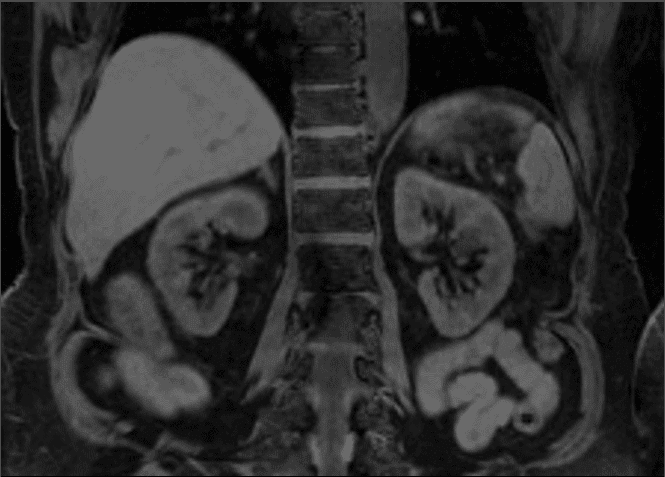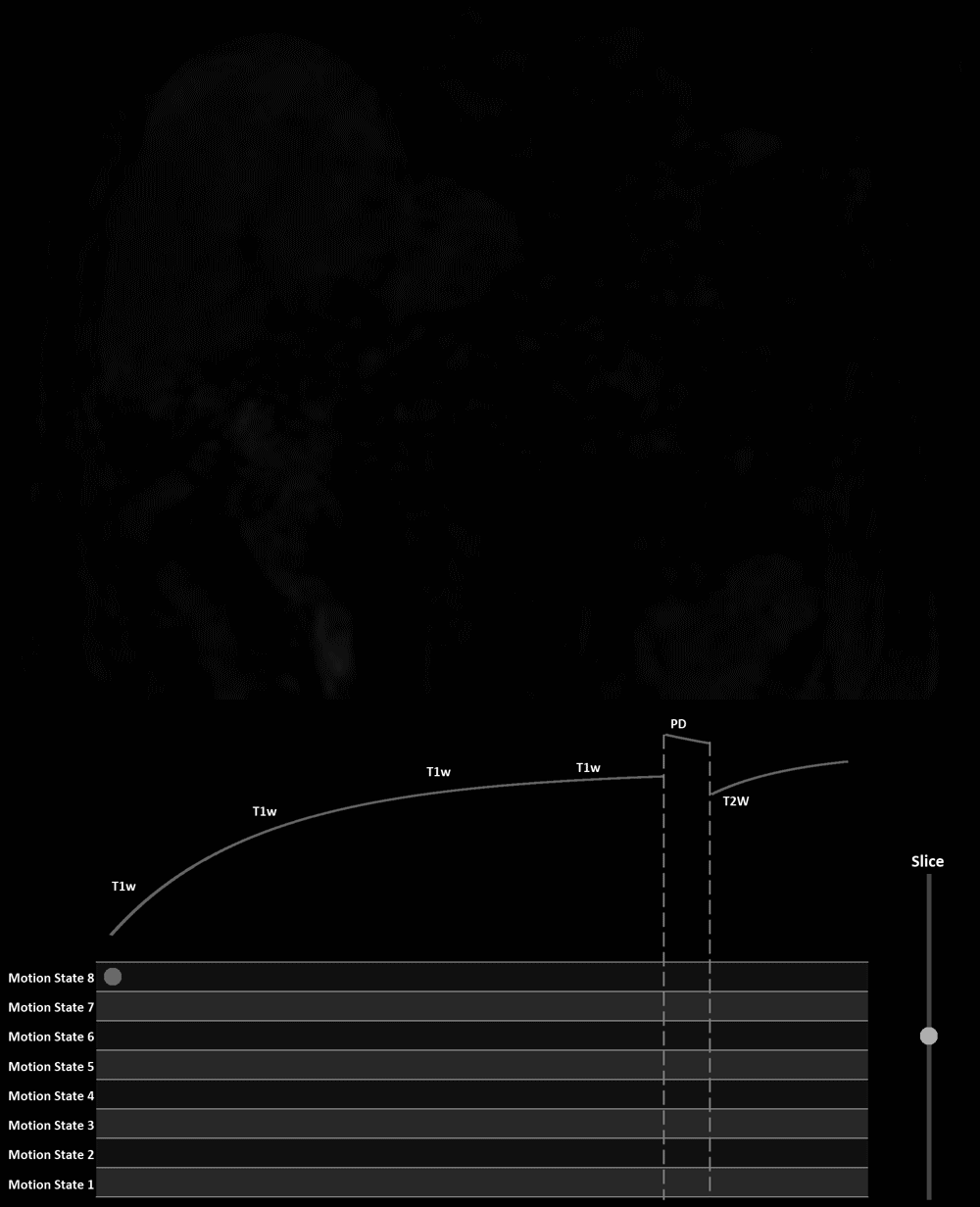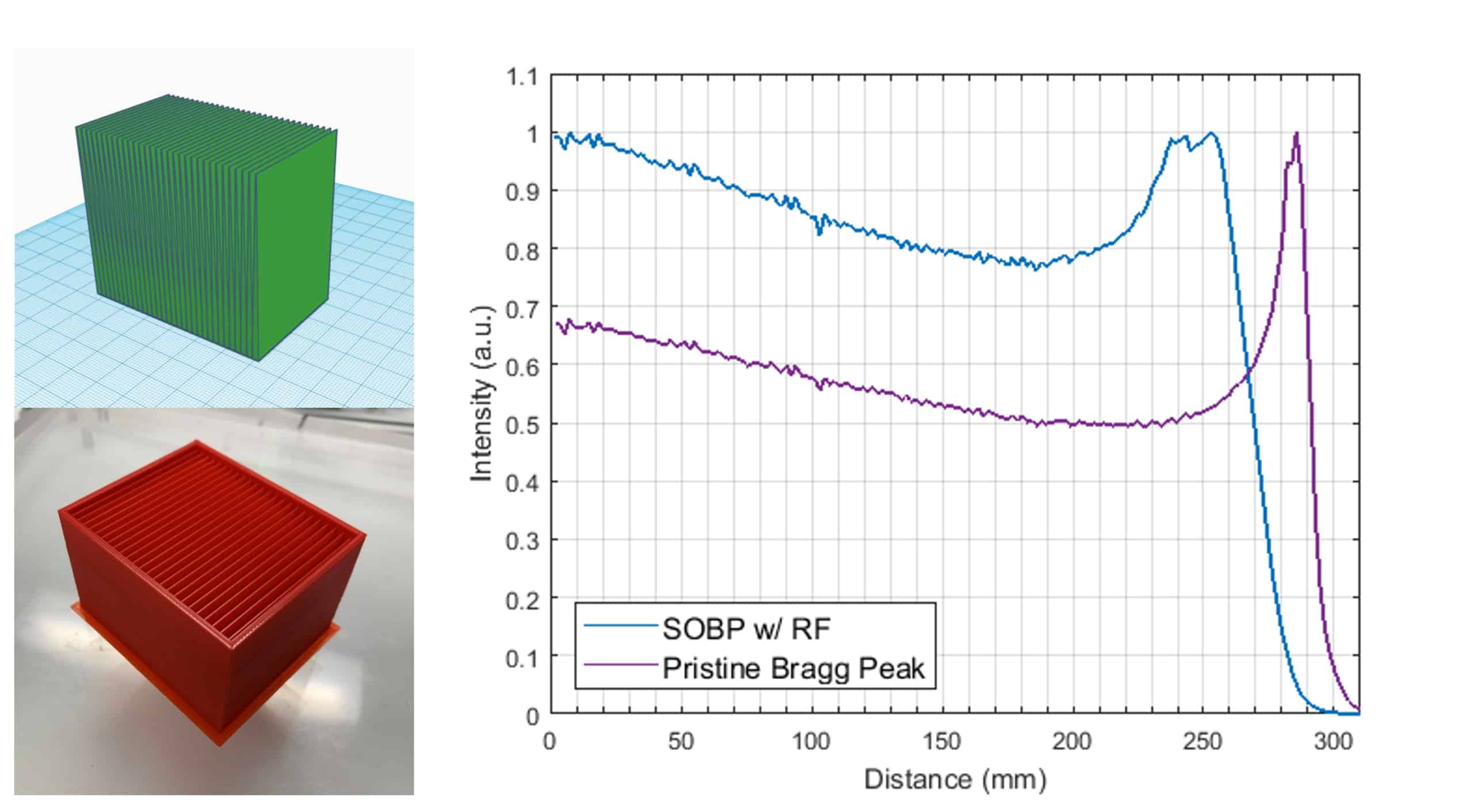
The “Best-in-Physics” presentations at the AAPM Annual Meeting highlight the conference’s 15 top scoring abstracts. In a previous article, we examined dose-optimized MLC tracking of multiple targets and radio-immunotherapy dose-painting. In our second look at the 2021 winning studies, we describe a new multi-contrast, motion-resolved MRI technique for radiotherapy planning and examine whether the spread-out Bragg peak can be used for FLASH proton treatments.
Multi-task MR lines up for radiotherapy planning and real-time tracking
MR imaging has recently been adopted for planning radiation treatments due to its superior soft-tissue contrast compared with CT. For radiotherapy in the abdomen, however, the process is complicated by respiratory motion and the large number of nearby organs-at-risk (OARs).

“MR techniques with multiple contrast weightings and motion-resolving capabilities are needed to address these challenges,” explained Junzhou Chen from Cedars-Sinai Medical Center and the University of California, Los Angeles.
Existing MR protocols, however, use separate scans to achieve multiple contrasts, making them susceptible to inter-scan misalignment. Motion-resolved 4D MR scanning, meanwhile, only uses a single contrast weighting. To address these limitations, Chen and colleagues are developing a multi-task MR technique that generates multi-contrast and motion-resolved volumetric MR images to enable MR-based treatment planning in the abdomen.
The researchers developed a multi-contrast pulse sequence that successively generates T1-weighted, proton density-weighted and then T2-weighted contrast in each repetition time. For data acquisition, they chose a cartesian spiral-in sampling trajectory, which reduces reconstruction time, achieves a higher sampling density in the central k-space region and avoids large gradient jumps before sampling the k-space centre. The multidimensional (spatial, contrast, motion states) images are made possible by the use of a MR-multitasking low-rank tensor framework.
Chen shared an example using the proposed multi-task MR to scan a healthy volunteer. The multidimensional images generated had a resolution of 1.6 (superior–inferior) x 1.6 (left–right) x 3.2 (anterior–posterior) mm, a field-of-view of 256 x 358 x 256 mm, and the respiratory motion could be resolved into eight phases. “Here, we demonstrated that a user can choose to view any contrast, any slice and any motion states they desire,” he explained.

The researchers validated the technique using simulations of a digital abdomen MR phantom with a random breathing pattern. The reconstructed images showed good agreement with the digital ground truth, for all three contrast weightings. They also validated the motion-resolving accuracy in scans of four healthy volunteers, observing a difference between the motion range resolved in the multi-task MR image and a 2D real-time MRI reference of within 0.2 mm.
“We think that this MR framework is very useful for abdominal radiotherapy because it can potentially help to improve tumour and OAR delineation,” Chen concluded. “The MR-multitasking framework can also enable volumetric, multi-contrast, real-time tracking during radiation treatment, potentially enabling real-time treatment adaptation. “This protocol can be further developed as an integrated MR platform for both radiotherapy planning and real-time treatment monitoring.”
FLASH treatments using a spread-out Bragg peak spare normal tissue
FLASH radiotherapy, in which radiation is delivered at ultrahigh dose rates, shows great promise for reducing normal tissue toxicity while maintaining anti-tumour activity. Proton beams are of particular interest for FLASH treatments due to their improved dose distribution compared with photons and electrons.

Most proton FLASH studies to date have employed the entrance plateau for irradiation, but researchers at the University of Pennsylvania are now investigating the potential of FLASH proton therapy using the spread-out Bragg peak (SOBP). “The goal of this study was to see if there was any FLASH normal tissue sparing at the SOBP, similar to that observed for transmission shoot-through studies,” explained Michele Kim.
To create a SOBP at a FLASH dose rate, Kim and colleagues 3D printed a custom ridge filter with small triangular peaks and placed it between the first and second scatterers in the research beamline at the Roberts Proton Therapy Center. As the proton beam travels through various thicknesses of material in the filter it generates a SOBP. The team used this setup to irradiate mice, modifying the beamline to ensure that the animal’s entire abdomen was situated within a 2.5 cm SOBP.

The researchers randomly assigned the mice to receive 15 Gy irradiation using one of four treatment regimens: FLASH with the SOBP; FLASH using the plateau; standard dose rate with the SOBP; or standard dose rate with the plateau. They measured dose rates of around 108 Gy/s for the FLASH beams and 0.82 Gy/s for the conventional proton treatments. Following the various treatments, the team assessed radiation damage by quantifying the number of proliferating intestinal crypts in the animals.
Best in physics: dose-optimized MLC tracking and radio-immunotherapy
“The SOBP-irradiated mice exhibited similar FLASH normal tissue sparing to the shoot-through irradiated mice,” said Kim. “Additionally, the FLASH-irradiated mice showed a significantly higher number of proliferating cells per crypt compared with standard dose rate-irradiated mice, using both the SOBP and the entrance region, which reinforces the normal tissue sparing seen previously.”
Next, the researchers plan to investigate the tumour control capabilities of SOBP-based proton FLASH. Kim noted that in future they will deliver conformal SOBP FLASH treatments to the mice, as all studies to date have involved the entire beam irradiating the entire abdomen.



